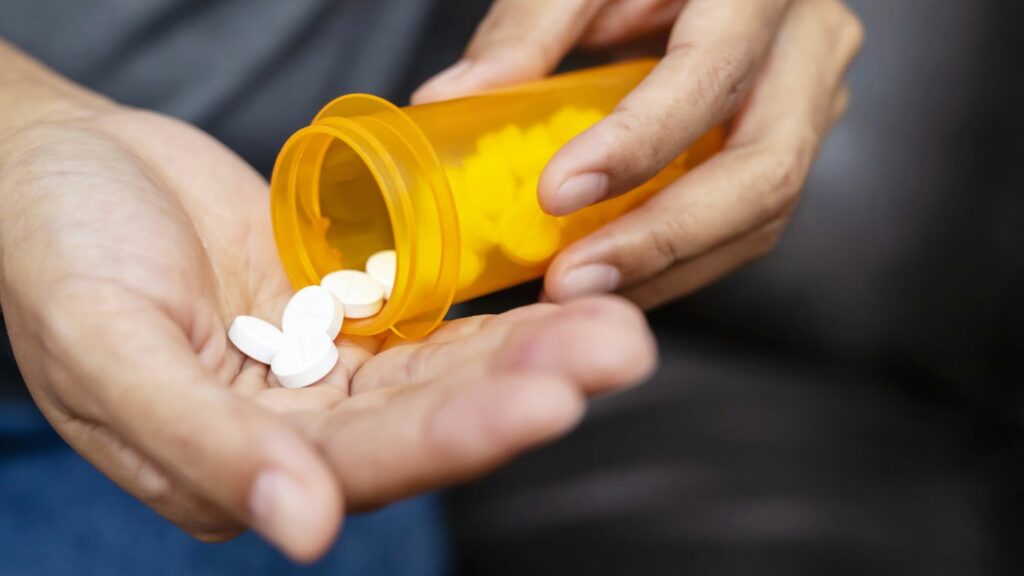DEA Warns College Students of Dangerous Rainbow Fentanyl

What is Rainbow Fentanyl?
There have been many news stories and public health warnings about rainbow fentanyl lately, and you may be wondering what exactly rainbow fentanyl is. According to the Drug Enforcement Administration (the DEA) and the Centers for Disease Control (the CDC), fentanyl, a type of dangerous synthetic opioids, has been manufactured by Mexican drug cartels and street drug dealers in a variety of bright colors that may look like candy. It is often the color, shape, and size of candy, and is even sometimes known as “Sweet Tarts” or “Skittles” on the street. There is no evidence that the colors correspond with their potency, a common myth. The DEA states that every color, shape, and size should be considered extremely dangerous, because there is no way, without professional laboratory testing, to know how strong your pill or powder is.
Fentanyl can actually come in pill and powder form, nasal spray, liquid drops on blotter paper, as well as blocks in bright colors resembling pieces of sidewalk chalk, and the “rainbow fentanyl” scare should not be a distraction from the other ways fentanyl is produced and distributed. It cannot be seen, smelled, or tasted, and it is not possible for illicit drug manufacturers to make guaranteed “safe” pills. It is important to remember that the people making these drugs do not care about your safety, and are only trying to sell as much as possible as quickly as possible to make a profit.
The DEA Warning About Rainbow Fentanyl
In recent press releases, the Drug Enforcement Administration has warned about rainbow fentanyl, along with fentanyl pills that have been pressed into pill form and sold as counterfeit Xanax, Adderall, Percocet, and other drugs, or have been sold in powder as cocaine or heroin. Due to fentanyl use and the efforts by Mexican drug cartels to sell more disguised fentanyl pills, the DEA estimates that in the US there are 150 opioid overdose deaths every day, and this number continues to rise dramatically. Drug poisonings are the leading cause of death for US citizens aged 18 to 45, and teen overdoses (age 14-18) in the US rose from 490 in 2019 to 950 in 2020, with two thirds of drug-related deaths in 2021 occurring due to fentanyl overdose.
Fentanyl is a highly addictive man-made opioid drug that causes temporary feelings of euphoria, pain relief, but its use also causes serious chemical dependence and impulsive behaviors, with serious withdrawal symptoms when you try to quit. It is important to remember that fentanyl pills can have any color, shape, or logo. If you see brightly colored pills while partying, or a drug that resembles sidewalk chalk, remember the chances of overdose death are much more important than getting high for a few hours.
Drug cartels and drug traffickers do not care about your health, and will do anything, including carelessly mixing fentanyl into their supply, to make a profit. There is no quality control, and you, your dealer, and even the traffickers themselves cannot be certain that what you are taking does not have a deadly dose of these synthetic opioids inside.
Why College Students Are at Greater Risk for Rainbow Fentanyl

Fentanyl has been recently found in pink, purple, blue, fuchsia, red, yellow, and green pills and bricks and candy-like shapes that have been created on purpose, sparking fears that cartels may be targeting children, but there is no evidence that that is the case. It is more likely found in this variety of bright colors and shapes to deter the attention of law enforcement during smuggling and sales, and to distinguish one dealer’s product from another.
DEA officials have stated that drug traffickers are using social media to target high school and college students through illegal drug sales online via e-commerce platforms, making it easy to obtain party drugs or “study drugs”, which are unfortunately often fake colorful pills that are a danger to public health. The aim is to get young people addicted to opioids, a terrible goal in and of itself, with the tragic result being thousands of accidental drug overdoses. The DEA’s “One Pill Can Kill” campaign of 2021 aims to educate college students on the dangers of buying any drugs or medications anywhere but from a pharmacy.
How Dangerous is Rainbow Fentanyl?
Fentanyl is odorless, tasteless, and you cannot see it, and you cannot ever take a “safe” amount of fentanyl. Every time you use fentanyl, you are in danger of overdosing. There is enough in one pill or a tiny amount of powder (enough to fit on the tip of a pencil) to induce a deadly opioid overdose. Fentanyl test strips can also miss potent analogue drugs like carfentanil, so there is no way to ensure what you are taking will not kill you.
Fentanyl is 50 times more potent than heroin, and 100 times more potent than morphine, and you never know what you are getting when you buy Fentanyl because dealers may put additional additives in your drugs that can cause long-term damage to your organs. Using fentanyl can cause other issues besides overdose, like:
- Respiratory system damage (lung and breathing problems)
- Cardiovascular system damage (heart problems)
- Brain damage and cognitive defects
- Impaired judgment can put you at risk, especially if you share needles
- Decision making, behavior control, and responses to stress are changed in the brain
- Problems with the law
- People who inject drugs may develop track marks, scarring, collapsed veins and skin abscesses
- Mental health issues can worsen due to drug use
Fentanyl is also extremely addictive. It is a very strong opioid drug that binds to the same receptors in the brain that control pain and emotion, and it changes brain chemistry in a way that is not ever 100% reversible. Addiction to fentanyl is a serious issue that often requires long-term therapy, rehabilitation, and medication-assisted treatments to overcome.
What If You Come In Contact With Rainbow Fentanyl?
If your skin has accidentally touched rainbow fentanyl or fentanyl of any kind, you are not likely to be affected, but you should wash the area well with soap and water as quickly as possible. Using hand sanitizer, bleach, or alcohol-based liquids will not wash it off, and may actually increase the skin absorption of fentanyl. Do not touch your eyes, mouth, or nose, and do not eat until you have ensured your skin is washed and free of potential fentanyl contamination. Monitor for any symptoms of intoxication like:
- Dizziness
- Drowsiness
- Nausea/vomiting
- Disorientation
- Pinpoint pupils
- Clammy skin
- Pale face
- Respiratory distress or depression
- Fingertips, inside of lips, and gums turning blue or purple
- Loss of consciousness
If you believe you or a friend have used fentanyl, or if you have accidentally inhaled or ingested it or came in contact via needle stick or contact with your mucous membranes, you are at risk of overdosing. Monitor for symptoms, and call 911 immediately and administer naloxone. Getting medical attention is imperative to any potential overdose, even if Naloxone has been given, as the effects of fentanyl can last longer than Naloxone in the body.
How Quantum Can Help
Fentanyl and other opioid overdose deaths have become a public health crisis, and the news releases and drug prevention PSAs by the DEA and the Centers for Disease Control have not been enough to stop it. The truth is that the only real way to ensure you are safe from experiencing an opioid overdose due to illicitly manufactured fentanyl is to stop substance abuse completely, especially prescription opioids, benzos, or other pressed pills or powders bought on the streets.
At Quantum, we provide outpatient rehabilitation programs that work in tandem with medication-assisted treatment plans, providing integrated treatments to help you recover from addiction not only physically but also psychologically, emotionally, socially, and spiritually. Through medical care, behavioral health care, family counseling, holistic treatment, long-term support, and continued medication management, along with connections to relapse prevention, alumni and 12-step programs, we will help you manage withdrawal symptoms, cravings, and mental health issues together, for as long as you need. We make it easy to start recovery right away. Just call us at (609) 993-0733 and our intake team will begin the admission process as soon as you are ready. We are here for you and only a phone call away.